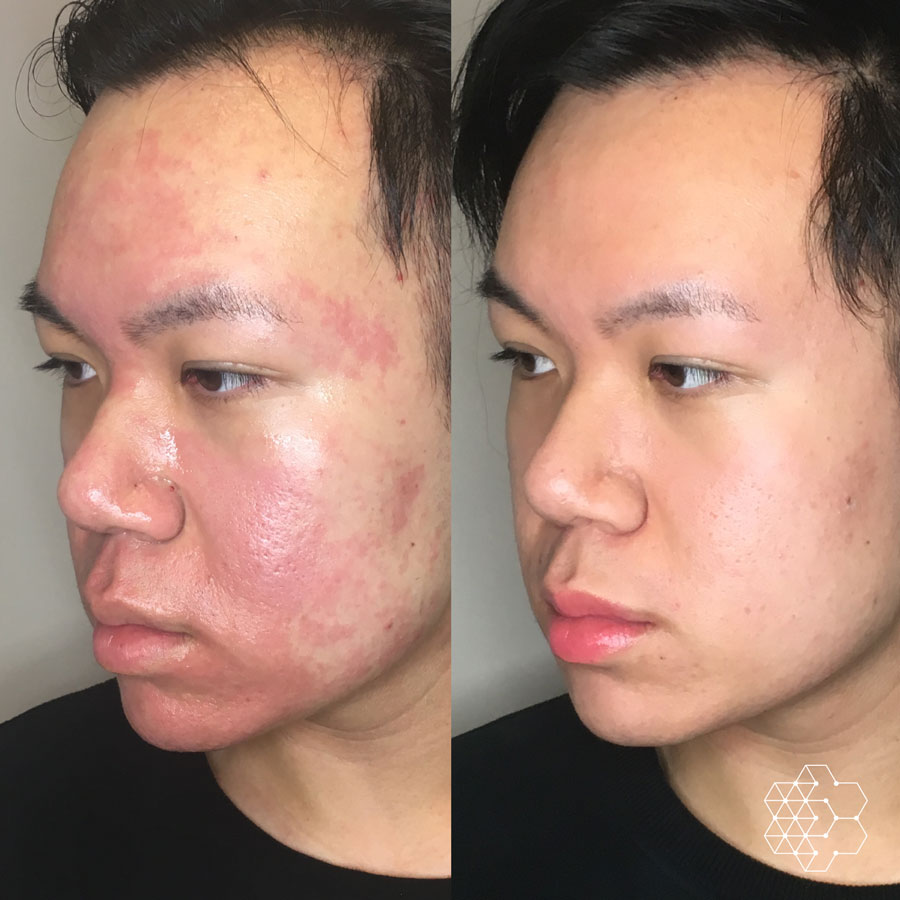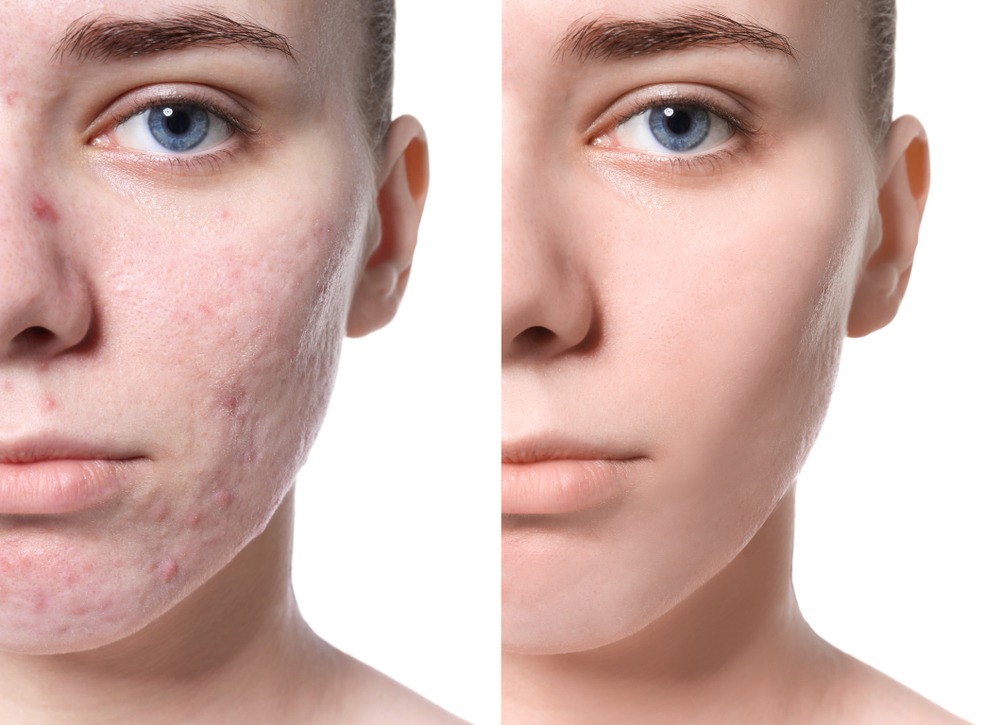A Comprehensive Guide to Managing Skin Problem: Focusing on the Treatment of Acne Scars
Acne scars represent a significant problem for numerous people, commonly impacting self-worth and overall skin wellness. Understanding the numerous sorts of acne scars, such as hypertrophic and atrophic, is vital for effective administration and therapy. This guide details a spectrum of restorative alternatives, from topical agents to innovative professional interventions, each customized to address certain mark qualities. Furthermore, integrating way of living adjustments and a devoted skincare routine can play a crucial role in improving therapy end results. As we check out these techniques, the inquiry occurs: what mix will generate one of the most effective results for ideal skin recuperation?
Comprehending Acne Marks
Comprehending acne marks includes acknowledging the complicated interplay between skin recovery and the inflammatory procedures that take place during acne outbreaks. Acne establishes when hair roots become blocked with oil, dead skin cells, and germs, bring about swelling. acne and acne scars treatment. This inflammatory feedback is critical for battling infection but can likewise cause damages to the skin's tissue
When the body tries to heal itself, it generates collagen, a healthy protein necessary for skin framework. Nevertheless, the quantity and top quality of this collagen can vary, leading to various sorts of scars. Aspects influencing mark development include the seriousness of the acne, specific skin type, genetics, and the body's recovery reaction.
Additionally, very early intervention in acne therapy can play an essential role in protecting against scarring. Prompt management of outbreaks reduces inflammation and tissue damages, which are important consider mark advancement. Education and learning on appropriate skin care and treatment alternatives is vital for people susceptible to scarring. Eventually, understanding the hidden systems of acne and its recovery process is vital for reliable management and prevention of acne scars.
Types of Acne Scars
The intricacy of acne scars can be categorized into numerous unique types, each mirroring the underlying skin damages and recovery action. The most common kinds include atrophic scars, hypertrophic marks, and keloids.
Atrophic scars are defined by clinical depressions in the skin and are commonly the outcome of inadequate collagen production throughout the recovery process. These scars can additionally be identified right into icepick, boxcar, and rolling marks, each varying in shape and depth. Icepick scars are deep and narrow, looking like tiny slits, while boxcar scars have a larger, much more angular look. Moving marks develop a wave-like texture on the skin's surface.
Hypertrophic scars, on the various other hand, are raised and result from an overproduction of collagen throughout recovery. These marks may vary in size and can often fade in time but may remain prominent.
Keloids are a much more serious type of hypertrophic scarring, prolonging beyond the original injury website and frequently needing a lot more hostile therapy alternatives. Understanding these kinds is essential for determining the most reliable treatment method tailored to an individual's specific mark kind and skin disease.
Topical Therapies
Topical therapies play a critical duty in handling acne scars, offering clients a range of alternatives focused on improving skin appearance and look. These treatments primarily concentrate on advertising skin regeneration, minimizing pigmentation, and improving total skin tone.
One of one of the most widely utilized topical representatives is retinoids, which are derivatives of vitamin A. Retinoids boost collagen production and increase cell turn over, aiding to lessen the look of scars over time. Furthermore, alpha hydroxy acids (AHAs) and beta hydroxy acids (BHAs) can exfoliate the skin, eliminating dead skin cells and advertising a smoother surface.
An additional effective classification consists of topical antioxidants, such as vitamin C, which can aid to lighten hyperpigmentation related to acne marks while providing anti-inflammatory benefits. Silicone gels and sheets have been revealed to hydrate and flatten marks, making them much less visible.

Professional Therapy Alternatives
When it pertains to attending to a lot more serious acne scars, patients often turn to specialist therapy choices that can deliver more significant outcomes than topical treatments alone. These interventions are generally administered by skin specialists or accredited practitioners and include various methods customized to private skin types and scar seriousness.
One of the most typical treatments is chemical peels, which make use of acids to exfoliate the skin and advertise regeneration. This technique can dramatically reduce the appearance of shallow scars. Microneedling, another efficient alternative, entails creating micro-injuries in the skin to stimulate collagen manufacturing, improving appearance and lessening scars.
Laser therapy is likewise commonly utilized, with fractional lasers especially targeting marked areas while maintaining bordering skin. This technique can generate impressive renovations in skin look over numerous sessions - acne scars. Furthermore, facial fillers are made use of to bring back quantity and smooth out uneven skin surface areas, offering immediate, albeit momentary, results
Way Of Living and Natural Remedy
Incorporating lifestyle modifications and home treatments can play a considerable role in taking care of acne marks, complementing specialist treatments. Keeping a balanced diet regimen rich in anti-oxidants, vitamins, and minerals can assist in view publisher site skin healing. Foods high in vitamin C, such as citrus fruits, and those consisting of zinc, like nuts and seeds, advertise skin regrowth and assistance minimize swelling.
Hydration is likewise crucial; drinking sufficient water keeps the skin hydrated, helping in its all-natural fixing processes. Routine exercise improves blood flow, which can improve nutrient delivery to the skin and improve overall skin.
Along with nutritional modifications, integrating topical natural remedy can be useful. Natural components such as aloe vera, honey, and tea tree oil possess antibacterial and anti-inflammatory properties, which might help in lowering the appearance of marks. Scrubing the skin with mild scrubs can also promote cell turnover, assisting in the fading of scars with time.
Furthermore, developing a constant skincare routine that consists of sun defense is vital, as UV exposure can darken marks. By incorporating these lifestyle modifications and home solutions, individuals can improve their skin's healing process and achieve an extra also skin tone.
Conclusion

Comprehending acne marks involves check out here identifying the complicated interaction in between skin recovery and the inflammatory procedures that happen during acne outbreaks. Variables affecting scar formation consist of the intensity of the acne, specific skin type, genes, and the body's recovery action.
These marks can better be classified right into icepick, boxcar, and rolling marks, each differing in form and deepness. Icepick scars are narrow and deep, appearing like small slits, while boxcar marks have a bigger, much more angular appearance.Effective administration of acne marks demands a comprehensive understanding of their kinds and the underlying systems involved in mark development.